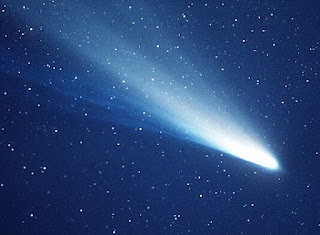Don't Miss the Orionid Meteor Shower
The Orionid Meteor Shower is a meteor shower that happens annually, and this year, it is peaking in the early morning on Wednesday, October 20th. Both viewers in the Northern and Southern hemispheres will be able to witness the spectacle. Skywatchers can expect to see rates up to 20 meteors per hour in the best conditions.
 |
| Meteor in Orionid Meteor Showr |
The Orionids are named after the constellation Orion, the hunter. Orion is best visible in October at around 11 PM PST. The Orionid meteor shower will be in the same direction as the Orion constellation. The meteor shower is viewable from anywhere in the world and star gazers will be able to see it well if they are able to locate the tip of Orion’s sword.
Now, when you think about meteors, you think they are large, but some of the particles in the Orionid meteor shower are as small as a grain of sand called meteoroids. When they enter the Earth’s atmosphere, they become meteors and burn up on entry due to friction. The few that reach Earth’s surface become meteorites.
The Orionid meteor shower contains some of the fastest meteors because the Earth is hitting a stream of meteors almost head-on, causing the frame of reference to move extremely quickly. Some of the meteors in the Orionid meteor shower and travel 148,000 miles per hour in relative speed. The Orionid particles originate from the Comet 1P/Halley, which is better known as Halley’s Comet. Halley’s Comet visits the Earth every 75 years as it makes its way around the Sun and Earth.Constellation Orion
Halley’s Comet dates as far back as 240 B.C. At the time, astronomers thought it was multiple different comets that were arriving. Only in 1705, astronomer Edmund Halley realized that it was the same comet appearing in intervals of around 75 years. The next time Halley’s Comet is expected to come by Earth is in 2061. On the other hand, the Orionids first made their appearance in 1839 and have since appeared every year.Halley's Comet
Remember to not miss this amazing event occurring in the early morning on Wednesday, October 20th.
Howell, Elizabeth. “Orionid Meteor Shower 2021: When, Where & How to See It.” Space.com, Space, 15 Oct. 2021, https://www.space.com/34373-orionid-meteor-shower-guide.html.




Comments
Post a Comment